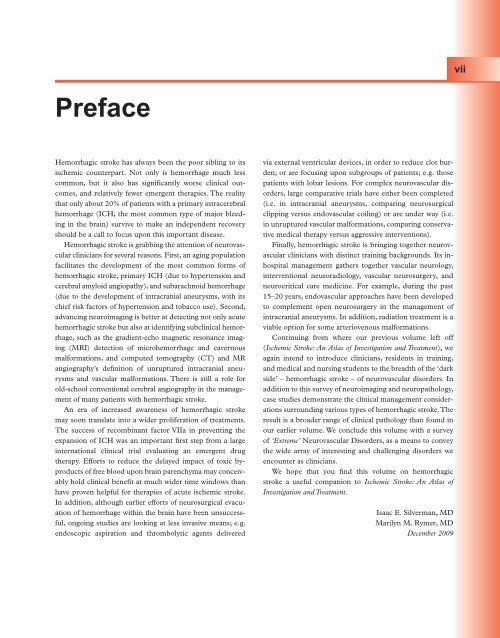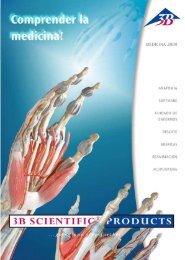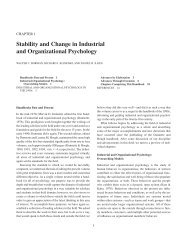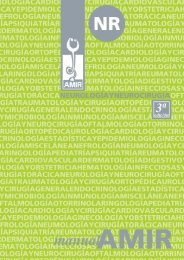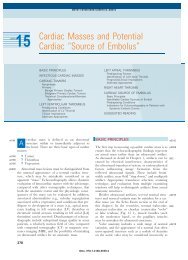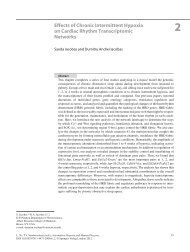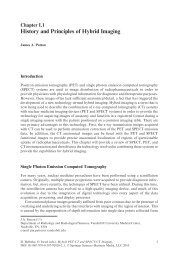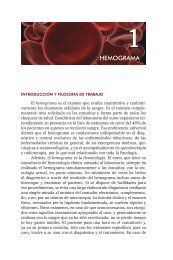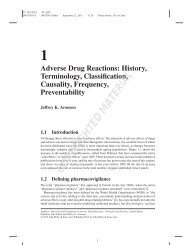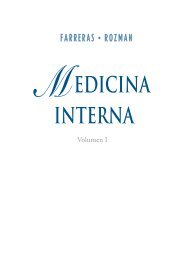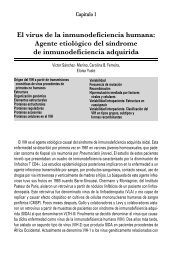HemorrHAgIc STroke - Clinical Publishing
HemorrHAgIc STroke - Clinical Publishing
HemorrHAgIc STroke - Clinical Publishing
Create successful ePaper yourself
Turn your PDF publications into a flip-book with our unique Google optimized e-Paper software.
Preface<br />
Hemorrhagic stroke has always been the poor sibling to its<br />
ischemic counterpart. Not only is hemorrhage much less<br />
common, but it also has significantly worse clinical outcomes,<br />
and relatively fewer emergent therapies. The reality<br />
that only about 20% of patients with a primary intracerebral<br />
hemorrhage (ICH, the most common type of major bleeding<br />
in the brain) survive to make an independent recovery<br />
should be a call to focus upon this important disease.<br />
Hemorrhagic stroke is grabbing the attention of neurovascular<br />
clinicians for several reasons. First, an aging population<br />
facilitates the development of the most common forms of<br />
hemorrhagic stroke, primary ICH (due to hypertension and<br />
cerebral amyloid angiopathy), and subarachnoid hemorrhage<br />
(due to the development of intracranial aneurysms, with its<br />
chief risk factors of hypertension and tobacco use). Second,<br />
advancing neuroimaging is better at detecting not only acute<br />
hemorrhagic stroke but also at identifying subclinical hemorrhage,<br />
such as the gradient-echo magnetic resonance imaging<br />
(MRI) detection of microhemorrhage and cavernous<br />
malformations, and computed tomography (CT) and MR<br />
angiography’s definition of unruptured intracranial aneurysms<br />
and vascular malformations. There is still a role for<br />
old-school conventional cerebral angiography in the management<br />
of many patients with hemorrhagic stroke.<br />
An era of increased awareness of hemorrhagic stroke<br />
may soon translate into a wider proliferation of treatments.<br />
The success of recombinant factor VIIa in preventing the<br />
expansion of ICH was an important first step from a large<br />
international clinical trial evaluating an emergent drug<br />
therapy. Efforts to reduce the delayed impact of toxic byproducts<br />
of free blood upon brain parenchyma may conceivably<br />
hold clinical benefit at much wider time windows than<br />
have proven helpful for therapies of acute ischemic stroke.<br />
In addition, although earlier efforts of neurosurgical evacuation<br />
of hemorrhage within the brain have been unsuccessful,<br />
ongoing studies are looking at less invasive means; e.g.<br />
endoscopic aspiration and thrombolytic agents delivered<br />
via external ventricular devices, in order to reduce clot burden;<br />
or are focusing upon subgroups of patients; e.g. those<br />
patients with lobar lesions. For complex neurovascular disorders,<br />
large comparative trials have either been completed<br />
(i.e. in intracranial aneurysms, comparing neurosurgical<br />
clipping versus endovascular coiling) or are under way (i.e.<br />
in unruptured vascular malformations, comparing conservative<br />
medical therapy versus aggressive interventions).<br />
Finally, hemorrhagic stroke is bringing together neurovascular<br />
clinicians with distinct training backgrounds. Its inhospital<br />
management gathers together vascular neurology,<br />
interventional neuroradiology, vascular neurosurgery, and<br />
neurocritical care medicine. For example, during the past<br />
15–20 years, endovascular approaches have been developed<br />
to complement open neurosurgery in the management of<br />
intracranial aneurysms. In addition, radiation treatment is a<br />
viable option for some arteriovenous malformations.<br />
Continuing from where our previous volume left off<br />
(Ischemic Stroke: An Atlas of Investigation and Treatment), we<br />
again intend to introduce clinicians, residents in training,<br />
and medical and nursing students to the breadth of the ‘dark<br />
side’ – hemorrhagic stroke – of neurovascular disorders. In<br />
addition to this survey of neuroimaging and neuropathology,<br />
case studies demonstrate the clinical management considerations<br />
surrounding various types of hemorrhagic stroke. The<br />
result is a broader range of clinical pathology than found in<br />
our earlier volume. We conclude this volume with a survey<br />
of ‘Extreme’ Neurovascular Disorders, as a means to convey<br />
the wide array of interesting and challenging disorders we<br />
encounter as clinicians.<br />
We hope that you find this volume on hemorrhagic<br />
stroke a useful companion to Ischemic Stroke: An Atlas of<br />
Investigation and Treatment.<br />
Isaac E. Silverman, MD<br />
Marilyn M. Rymer, MD<br />
December 2009<br />
vii


